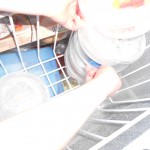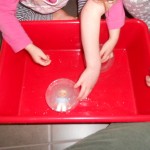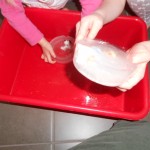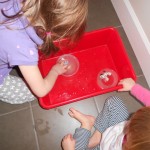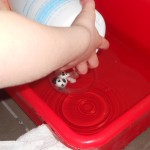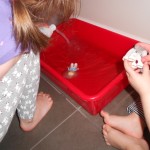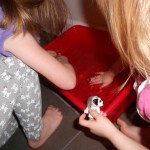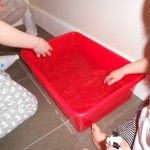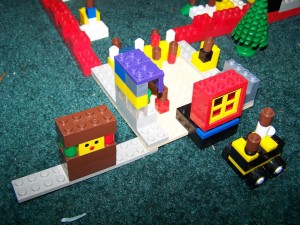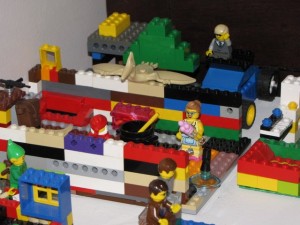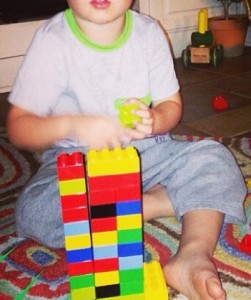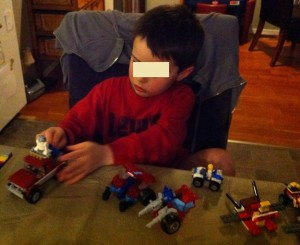Lego and Duplo can be used for some unique ways to play for fun, learning, and kindergarten readiness all at the same time. There have been lots of posts recently about freezing pieces and they certainly made me wonder, especially who first thought of the idea.
Knowing that a container of liquid could get spilled before we ever got it to the freezer, the best choice was to use ones with lids. These clear ones from the deli section of the store were a good size and didn’t take too long to freeze. They are about the size of a small bowl. We filled them with water not quite to the top. Since the pieces were sitting right at the bottom, there was room for big Duplo pieces.
When the chunks were ready, both Big Sister and Little Sister, each had one. To catch the drips, I used a big tub on the floor. First, they held them until their fingers were cold, then put them down. They slid them back and forth in the tub, but that didn’t help with melting. Big Sister tried blowing on her ice and Little Sister tried to eat it. After a few minutes, I asked what could help melt the ice. Big Sister suggested hot water. She ran some warm water into her deli container, brought it over from the sink, and poured it on the pieces. After 3 or 4 trips, she used an empty plastic bottle which would hold more water.
Both kids played with the pieces of ice in the water, stirring with their hands, lifting them up to check and see if they were smaller, putting them back in, and checking to see how much more was more showing. Because the pieces were right at the surface, there were bits that stuck out from the beginning, but it was still several moments until they came completely out. The play didn’t stop when that happened but continued on for a few more minutes afterwards with just the bits of ice, water, and the Duplo.
What looked like a simple activity involved lots of learning: use of language, stimulation of the sense of touch, concentration, patience, and observation. The end result of getting the piece of Duplo out of the ice was a form of goal-setting. Although each child had a separate chunk of ice, social skills were needed to share the space and the activity. This was definitely fun! Have you tried this with your child?

